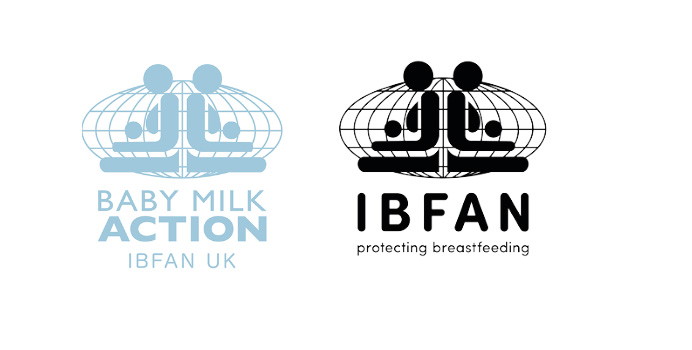Trade body tackles misleading labelling of look-alike milks.
40th Codex Alimentarius Nutrition Committee (CCNFSDU)
Berlin, Germany. 23-30th December 2018
In Berlin this week, foods and drinks for babies dominated the agenda of the Codex Alimentarius nutrition meeting – the WHO/Food and Agriculture (FAO) body that sets standards for the global food trade. Codex standards are used by the World Trade Organisation as benchmarks in trade disputes. (1)
The United States (US)(2) once more joined the 173 industry representatives of the food and agro-chemical industries (3) in calling for minimal composition and marketing controls so that the booming trade in baby formulas (4) targeting older babies – could continue unabated – especially to developing countries in Asia, Africa and Latin America. The US was joined by Australia, New Zealand and China.
The products under discussion were not the ‘infant formulas’ that are needed when babies are not breastfed, but the unnecessary products that target babies over 6 months (often sweetened and flavoured) that look almost identical to standard infant formulas (5). These products – called Follow-on, Toddler or Growing Up milks – were invented by the baby food industry – Nestlé, Danone, Mead Johnson and Abbott and others – in a cynical move to bypass the globally agreed marketing restrictions and extend the formula market. They been an amazing success story for pure marketing hype and their aggressive and misleading advertising on TV, billboards, has undermined breastfeeding, threatened child health and fuelled the obesity epidemic.
The US opposition to a proposed World Health Assembly Resolution in May 2018 and its bullying of Ecuador (the sponsor of the draft Resolution) had sparked widespread media coverage (led by the New York Times). As a consequence the US was careful and slightly less strident in its tone. There was also strong resistance from African, Asian and Latin American countries, WHO, IBFAN and other civil society NGOs, so some important labelling safeguards – including the ban on claims and cross promotion – made their way into the draft text for formulas for 6-12 months. (6)
There were many other agenda items and IBFAN and partners tackled, including Bio-fortification, Ready to Use Therapeutic Foods, Probiotics and the need for Codex decisions to be based relevant and convincing scientific evidence. In June at the Codex Commission Meeting in Rome – the US had argued
(1) Codex has a dual mandate – to protect consumer health and facilitate fair trade.
(2) Its worth noting that the US was the only country to vote against this Code when it was first adopted at the World Health Assembly in 1981. Consensus on the Code was reached during the Clinton administration in 1994.
(3) The Committee was attended by 378 participants representing 73 member countries, one member organisation and 41 observer organisations. 173 (46% of attendees) represented the agro- chemical and food industry. Some came as industry ‘front’ groups, 71 were invited to sit on government delegations – so gaining direct access and influence to what was said thoughout the meeting.
(4) Spotlight on infant formula: coordinated global action needed Lancet 2016
(5) Since 1986 the World Health Assembly has declared these products are not necessary, as did the European food Safety Authority in 2013.
(6). REVIEW OF THE STANDARD FOR FOLLOW-UP FORMULA (CODEX STAN 156-1987) 7, 8
9.6 Additional labelling requirements
- The Committee noted that this section was largely based on Article 9 of the WHO International Code of Marketing of Breastmilk Substitutes, and Recommendation 4 of the WHO Guidance on Ending the Inappropriate Promotion of Foods for Infants and Young Children (specifically provision 9.6.2); and in some cases the provision used the wording as contained within the
- One observer called for the inclusion of the word “independent” in 9.6.1 (c).
- There was discussion regarding 6.1(d) with the resultant agreed text referring to “not leading to cessation of continued breastfeeding” rather than referring to “not replacing breastmilk” as this concept was considered in conflict with the definition.
- Regarding 9.6.2 the decision was taken to include young children in the list of prohibited pictures on the label of follow-up formula for older
- The Committee made further amendments, to align with the WHO guidance, to section 9.6.2.4 to emphasize that the product was not similar to breastmilk; and to section 9.6.4 to indicate that the product should be distinctly labelled to ensure that consumers could distinguish between infant formula, follow-up formula for older infants and [product] for young children, and foods for special dietary uses. In addition, a statement that cross-promotion was not allowed on the label was also introduced. Some delegations were not in favour of a provision on cross-promotion and raised concerns on whether it included advertising and marketing and that it went beyond the mandate of this Committee. The Chair confirmed that any reference to cross-promotion should be in relation to the label of the A suggestion was made to refer to cross-promotion on labelling rather than label. A question was then asked whether the term labelling extended to marketing and advertising.
- Attention was drawn to the Codex definition of labelling in the General Standard for Labelling of Pre-Packaged Food (CXS 1-1981) that included “any written, printed or graphic matter that is present on the label, accompanies the food, or is displayed near the food including that for the purpose of promoting its sale or disposal”. The Representative of WHO clarified that the intent of the provision on cross-promotion was to avoid messages on labels that a product for a particular age group was also suitable for another age group or that reference was made to a similar product for another age group. Based on the clarification on the meaning of cross-promotion, the Committee agreed that the wording in the last section of 9.6.4 should refer to label/labelling and that “label/labelling” should remain in square
Two useful articles.
Child health is on the line as Codex deliberates food standards on:
